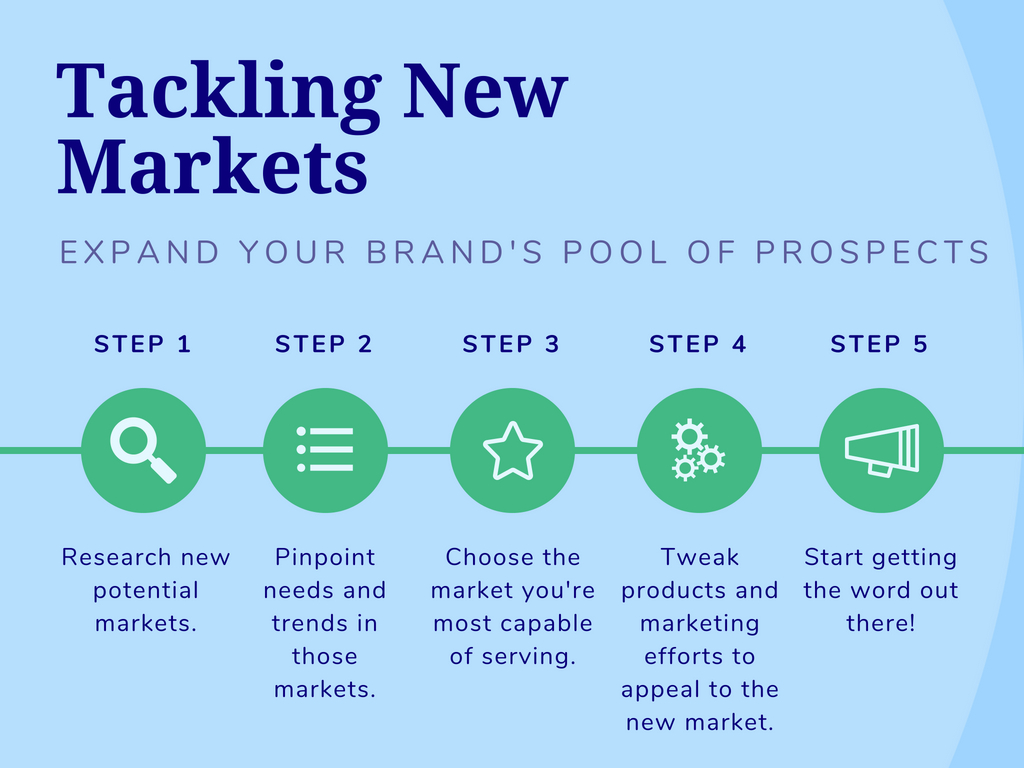If you ask three entrepreneurs what business development means you’ll probably get three different responses. Why? Because the term actually encompasses multiple concepts: cash flow, brand presence and market security. Crafting a business development plan involves strategically looking at each of these and implementing a cohesive series of strategies to help ensure your company’s longevity and success.
What your plan looks like will never be the same as another business’s. And it will constantly fluctuate and require adjustments.
But, these nine ideas will give you a head start.
3 ideas for creating long-term value
Every business owner wants to bring in a steady cash flow that trends upward over time. Products, pricing and marketing are obviously a huge part of this, but the value of your brand is what really drives long-term, consistent sales. You need to develop products that sell, know who you’re selling to and learn to reel them in effectively.
Define your purpose. You know why you started your business. And you know the benefits you’re offering customers and clients. So, put that into words. Whether you make a thoughtful list or craft a full mission statement, writing down your purpose helps create a clear picture of your brand. Use this to guide product development, relay your vision to others and pinpoint your unique selling proposition (USP).
Focus exclusively on your base. You’ve heard the saying “you can’t be all things to all people” and it rings especially true for small businesses and freelancers. Target the people you can best help and then perfect how you serve and market to that group. Casting a wide net might give you huge sales numbers at first, but you’ll sputter out quickly.
Refine those sales skills. Whether you’re pitching to a potential client one-on-one or marketing a product to a specific demographic, it’s essential that you know how to sell. When reeling in clients, research prospects and pinpoint the decision-makers before you reach out; and when you do, don’t rely on hype or sales-speak. Instead, ask them how they’re currently handling things and what areas they’re having issues in. Then, pitch your product, focusing on the prospect as a unique individual. When targeting a demographic, the same rule applies. Research your base, find out what they want and need and then use that data to frame your product development and marketing efforts.
3 ideas for forming and nurturing relationships
Networking and establishing trusting, lasting relationships with your customers are essential to business development and a strong brand presence. As a business owner, your customer base should always be top priority, with your network following a few steps behind. Yet, each affects the other: If you’re always a taker in your network and never a giver, this potentially bleeds into how the general public views your brand. Likewise, if you’re always trying to get new customers instead of taking care of the ones you’ve already earned, that lack of care will negatively affect how prospects and current customers view your brand. Which makes you useless to potential connections.
Develop quality business relationships. When networking, the number of people you “know” doesn’t matter. Sure, having a long list of connections looks good on paper or social media. But it’s just a list. What industries will provide you with the most lucrative connections? Of those industries, who are the right people to connect with? Those are the people you need to get to know.
Value the customers you already have. Remember, your current customers, when engaged and guided, are infinitely more valuable to your business than any one prospect. As with networking, the number of customers you have doesn’t matter nearly as much as how excited about your brand and product your current base is. When you always prioritize your current customers over prospects, you create a strong, reassuring brand image that naturally draws in new customers.
Be quiet. If you’re constantly talking, pitching and selling, you aren’t creating relationships. You’re just giving a speech. Ask questions of people you’re interested in networking with and customers or clients you want to target. Then, sit back and listen. Your job as a business owner is to pinpoint exactly what your customers need and then help them. And the only way you can build a worthwhile network is to identify how you can be of use to others in your industry so they’re more apt to be useful to you. Both require a mostly-closed mouth and open ears.
3 ideas for mastering your market and tapping into new ones
Even the most thoughtful and relationship-oriented business falters when it’s stagnant. No matter what industry you’re in, trends, ideas and needs shift and evolve over time. Staying ahead of the game in your market, and with your base, while keeping an eye out for new ways to tweak your current products to appeal to a wider market, help ensure longevity for your brand.
Get there first. Sounds vague, right? You know you need to stay one step ahead of competitors, but you also need to reach out to the people you’re targeting before your competitors ever get to them. Yes, simply getting to someone first drastically increases your chances of conversion—to the tune of 50%, according to sales acceleration platform InsideSales.
Constantly analyze your base for new markets to target. A targeted approach draws in new customers. But, you also have to find areas where your product can be tweaked to appeal to and serve an entirely new market. Example: A local family-friendly restaurant could appeal to the child-free demographic with a monthly wine tasting. And that could, in turn, help them target the wedding or event catering market in their area.

Be flexible and forward-thinking. If you pay even cursory attention to the world of business, you know massive, national companies that once seemed unbreakable are failing because they assumed key aspects of the market would remain the same. Obviously, that’s untrue. Brick-and-mortar retailers who’ve been in business for generations are slowly closing up shop because, in part, they failed to recognize where retail was heading. Conversely, the retailers who jumped on the e-commerce bandwagon—and did so without clunky websites and awful online customer service—remain viable.
Business development requires that you constantly work to perfect and advance your practices, think strategically and always look ahead. Without that, you’re most likely to make a quick buck and then … buckle. But if you keep your mind open, focus your methods and remain flexible, you’ll have the best chance of true, lasting success.
Ready to take action? Check out these exclusive Biz.me articles for even more tips and ideas:
- 5 tried-and-true ways to improve customer satisfaction
- Reel in lapsed customers with these tips and tricks
- Cross promotions: partner up and expand your base
- Simple yet powerful customer retention strategies
- Elevate customer support with these tips
- The sky’s the limit: strategies to expand your business
- Your local Chamber of Commerce isn’t a relic – it’s a wealth of opportunity
- Honing your sales tactics




